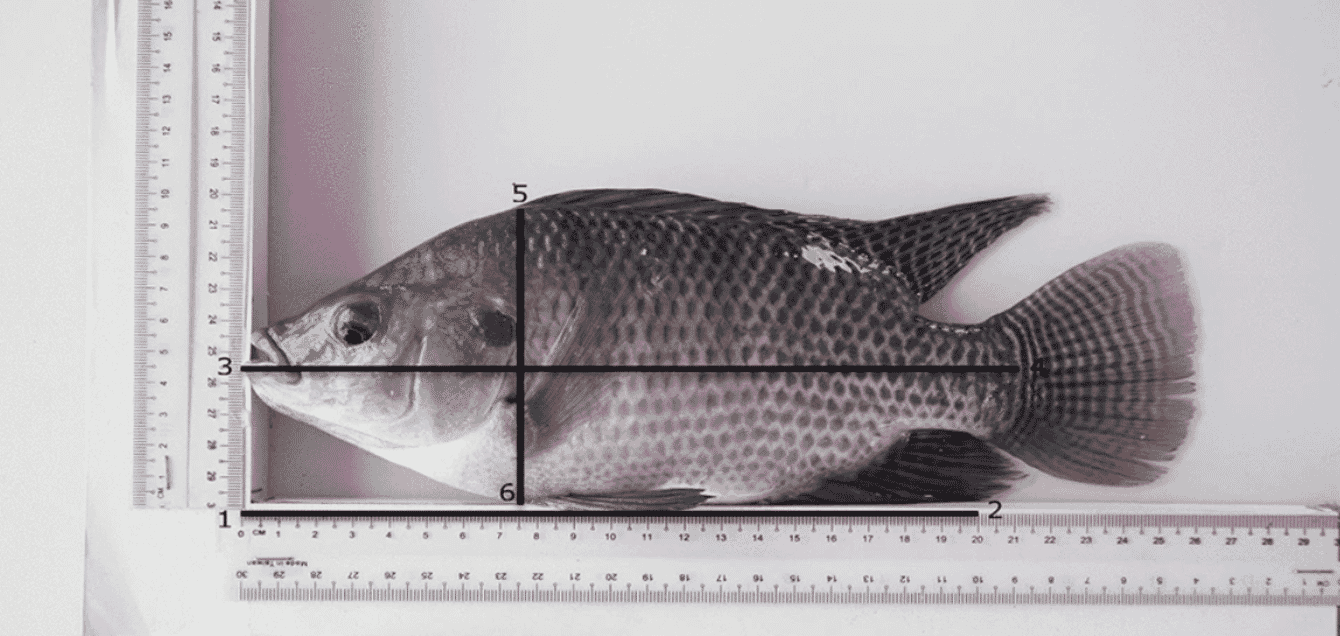
Nile tilapia with landmarks 1:6. Landmarks 1 and 2 marks a reference scale of 20 cm length, landmarks 3 and 4 represent the snout and base of the caudal fin, respectively, landmarks 5 and 6 were used to measure height (maximum dorso-ventral length) of the experimental fish. © WorldFish
So concludes a team of researchers from Wageningen University and WorldFish, who decided to investigate the possibility of breeding tilapia that are best suited for these conditions.
“Nile tilapia is predominantly produced in smallholder ponds without aeration. We hypothesize that Nile tilapia with high oxygen uptake efficiency may perform better under these conditions than Nile tilapia with low oxygen uptake efficiency,” they explain.
In order to achieve this they investigated the critical swimming speed of 1,500 fish – first in tanks, then in non-aerated ponds, as a potential indicator for oxygen uptake efficiency levels.
“Our objectives were to estimate variance components for critical swimming speed and fish size at swim testing early in life, and genetic correlations (rg) between critical swimming speed with harvest weight (HW) and daily growth coefficient (DGC) later after grow-out in a non-aerated pond,” they explain.
Their research showed promising results, with a heritable variation in critical swimming speeds of 0.41–0.48. However, those with higher critical swimming speeds were also shown to grow more slowly.
“These results suggest a juvenile trade-off between swimming and growth performance where fish with high critical swimming speed early in life show slower growth later under conditions of limited oxygen availability,” they noted.
As a result of these factors they suggest that tilapia breeders should adopt a two-stage breeding programme.
“In practice we recommend a two-stage selection scheme, where selection in the first stage is on retaining 90 percent of the fittest fish in terms of critical swimming speed, followed by a second stage selection on harvest weight,” they suggest.
“In conclusion, including absolute critical swimming speed as a breeding goal, in addition to harvest weight and daily growth coefficient, could be beneficial if the aim is to select for fitter fish, especially in environments where oxygen is limiting. Absolute critical swimming speed can be measured at an early stage on the selection candidates themselves, high throughput and non-invasively although size of the tested fish may be restricted due to difficulty in reaching sufficiently high flow speed. However, selection on critical swimming speed with 10 percent selection intensity for the highest values of critical swimming speed could lead to a 19 percent reduction in mean harvest weight of the offspring, compared to direct selection on harvest weight,” they conclude.
Further information
The study, which was published under the title Heritable variation in swimming performance in Nile tilapia (Oreochromis niloticus) and negative genetic correlations with growth and harvest weight is now available to access in Scientific Reports.


